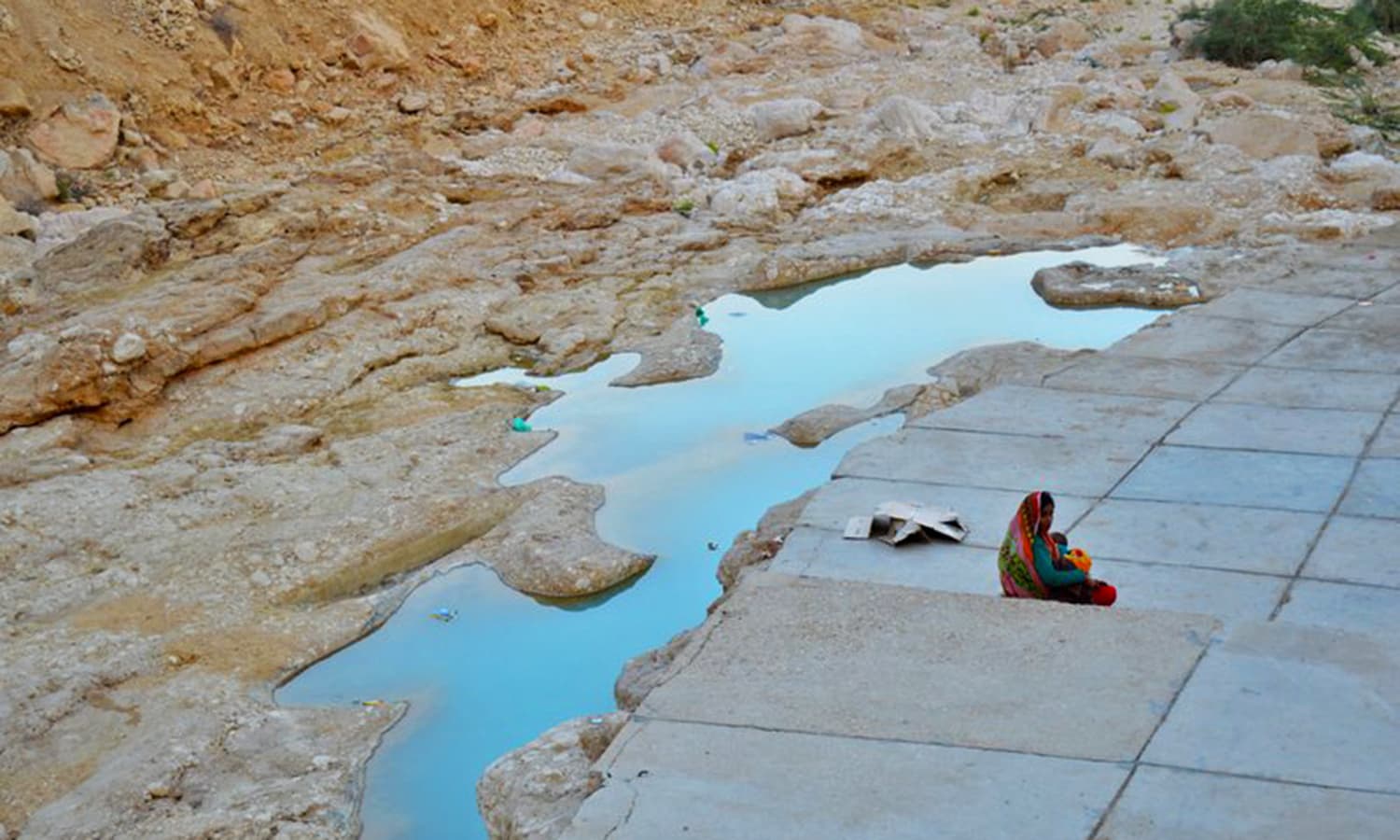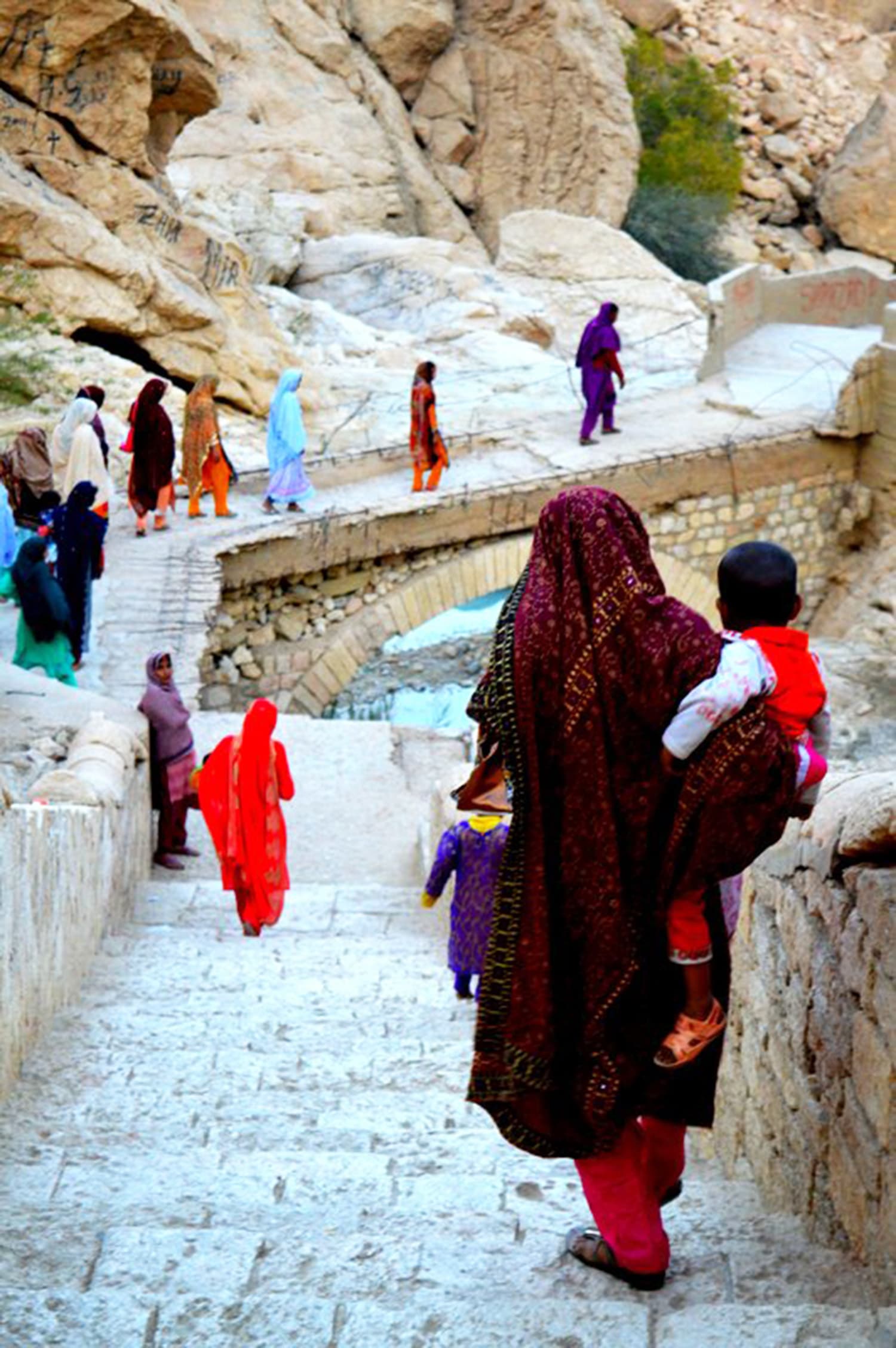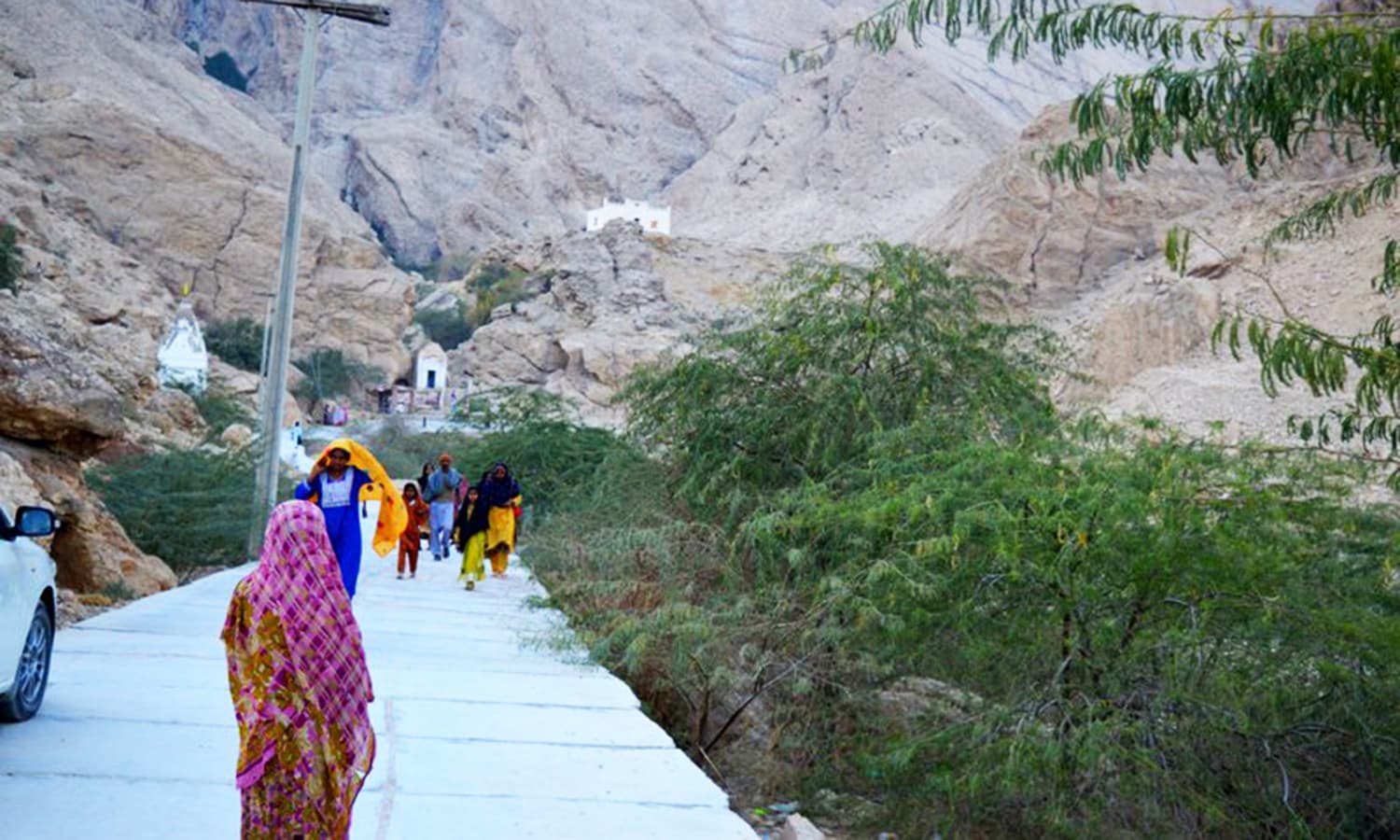Once populated with temples, only traces of Hinduism remain in Laki
Earlier this year, I went to Laki, which is about 18 kilometres from Sehwan. Laki is famous for its natural streams, but once I got there, I also realised how important Hinduism has been to Sindh and how embedded the religion is with the geography of the region.
In his magnum opus, Sindh Revisited, 19th century British scholar and traveller Richard Burton describes Laki as a place of pilgrimage for Hindus. The devotees called the streams dharan tirtha, which means “constant flow of the earth in a holy place.”

I saw men, women and children climbing the hills to visit a cave dedicated to the saint, dharan pir. I followed them and on the way up, I noticed a tree where people had tied multi-coloured cotton threads. It was a ‘wish tree’ and the threads are only removed when a person’s prayer has been answered.
The cave was tiny and dimly lit. There was a raised platform where women were bowing and presenting flowers, candies and other offerings. After coming out of the cave, I went on a bridge that led to a flight of steep, rough-hewn stairs.


As I went up the stairs and reached the top of the hill, a subtle feeling of elation and adrenaline took hold of me. I took in the splendour of the Laki mountains with beautiful green streams below. There was silence and I could feel my heart throbbing.
Although the landscape was arid, the multi-coloured and heavily-embroidered dresses of the local women added a beautiful contrast. The pale, green ponds run along the entire site and gave off a pungent odour. The bathing rituals are still practiced by the pilgrims, not to wash off sins but mainly to get rid of skin diseases.


Centuries ago, Laki was also considered the favourite spot for ascetics who wanted to commit ritual suicide. Ascetics would ascend to the nearby hills and after ablution, prayer and meditation, they would spend the night on the edge of a hill. If terror gripped their hearts, it was a sign that they were not ready. But if they were able to sleep peacefully, the next morning they would take their own lives.
Laki used to be of special significance for worshippers of Shiva as well. French researcher Michel Boivin, in his book Sindh Through History and Representations, notes that Laki “is one of the most important places of the Shivaite cult in Sindh and a stopover for pilgrims going on the journey to Hinglaj Mata temple to celebrate yatra [pilgrimage] in Balochistan.”


But today, there are only a handful of shivalas or temples in Laki. Once majestic, they now wear a deserted look since there is no one to take care of them anymore. This is a far cry from the past when the area was dotted with shivalas and Hindu monastic establishments. Scholar and traveller Hiuen Tsang visited Sindh in the seventh century and described that there were 273 Hindu temples here, out of which 235 belonged to Pashupata Shivaites, which is another order of Shivaism.
I don’t know in what context it was written, but this poem by the great Shah Abdul Latif Bhittai perfectly captures the pain I felt after seeing Hinduism disappear from the land where it once flourished:
God-seeker’s voice today I miss
The courtyard now is desolate
The sight of empty places here
Kills me, so tortuous it is
Who to the soul gave life and bliss?
The selfless ones, departed are
Today, the yogis disappeared
Remembering them, I wept whole night
Those whom I searched and so revered
Are vanished, never to return



All photos by the author
Have you visited any lesser-known historical and religious sites? Share your experience with us at blog@dawn.com
Zahida Rehman Jatt is an anthropologist and social science researcher. She is lecturer at the department of anthropology and archaeology at the University of Sindh in Jamshoro.








